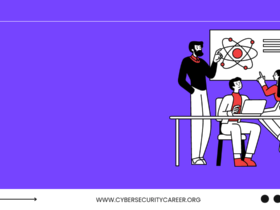Penetration testing is a form of pseudo-enemy attack undertaken by teams of ethical hackers that search digital systems and applications for security flaws. Penetration testers must think like cybercriminals while staying informed on all the latest hacker techniques to identify vulnerabilities and exploit them successfully.
No matter whether you are just getting into cybersecurity or are an IT professional looking into pentesting as a career option, here are some helpful tips.
Reconnaissance
At a time when cyber attacks have become more frequent and damaging, businesses must devise effective measures to secure their information systems and applications from being breached. One effective method is penetration testing or pen testing – an attack-style attack designed to identify security weaknesses on computer systems similar to what hackers would employ when performing pen tests on them.
Initial step in any penetration test should always include reconnaissance – gathering information about the system being tested – either passively or actively depending on which methods are being employed. Passive reconnaissance typically uses search engines like Google to gather publicly available information such as subdomains, links and previous software versions; active reconnaissance involves directly engaging with target network using various tools to map its topology and detect any possible points of exploitation.
Burp Suite is an all-in-one platform for web application security testing that is frequently employed during reconnaissance. This tool can identify any backdoors or holes in websites, while its many features help facilitate penetration tests. Nmap, on the other hand, scans network information for vulnerabilities while Metasploit allows users to create and execute various exploits.
Internal penetration testing simulates attacks from within an organization, mimicking an insider attack to protect sensitive data and business-critical applications from being compromised by outside threats. Furthermore, such testing can identify weaknesses in firewalls and servers of a company and point towards potential areas of vulnerability for improvement.
Penetration testing has grown increasingly popular, prompting more skilled professionals to perform it. While a degree in computer science or IT may help, experience and ability are ultimately what count most for performing penetration testing successfully. Earning cybersecurity certification may add value to your resume and advance in your career within this field.
Penetration testers must adhere to ethical conduct and work within the scope of work outlined by their client or risk facing legal repercussions. If found hacking into networks without their express permission, for example, fines and prison sentences could result. It’s therefore vital that penetration testers maintain an in-depth knowledge of current threats and tactics to safeguard themselves against legal action.
Detection
The detection stage of penetration testing involves employing real-world attack techniques to discover vulnerabilities and assist with fixing them. Penetration testers investigate IT assets being tested such as networks, devices, users, applications etc. in this phase – networks being examined may include networks, devices users users applications etc – this requires skill in enumeration navigation and identification skills which can easily be obtained with practice in pentesting labs (EC-Council Certified Penetration Tester program for example).
An important key to being an effective penetration tester is thinking like an attacker. Indeed, some of the best penetration testers are former hackers who have transformed their talents to aid companies in protecting their IT environments. At the detection phase of penetration tests, testers use OSINT and threat modeling tools to identify entry points into systems as well as vulnerabilities that allow for entry.
Once a list of potential vulnerabilities has been assembled, a penetration tester can begin exploring them to discover and exploit weaknesses in network infrastructure, devices and applications. This may involve brute force attacks, software bug exploiting techniques or any other means necessary to detect and exploit vulnerabilities – this phase usually ends with a detailed report and recommendations being generated as a result of this phase.
Penetrating testing should be undertaken correctly to help ensure the IT infrastructure of an organization is protected from potential real-life attacks, enhance its security controls, test their efficacy against social engineering attacks and other threats, as well as boost employee awareness.
As penetration testing becomes ever more advanced, organizations need to work with trustworthy ethical hacking vendors that understand all types of attacks and can deliver appropriate levels of service based on the organization’s risk tolerance. Penetration testers are in high demand across industries, and it is expected that this demand will only increase over time. Before applying to be a penetration tester, candidates should obtain relevant certifications, gain practical experience through penetration testing labs, and remain current on current security trends and attack techniques. This may involve participating in Capture the Flag challenges/platforms or even Bug bounty programs to discover and responsibly disclose web application vulnerabilities.
Exploitation
Penetration testing stands out in cybersecurity for both its significance and excitement. It involves infiltrating well-protected computer systems in order to locate any vulnerabilities that black hat hackers might exploit for illicit gain. Pentesters, commonly referred to as ethical hackers, must possess both technical expertise and social engineering know-how sufficient to outwit seasoned IT professionals working at large corporations.
Penetration testers utilize tools such as Nessus, Metasploit and OWASP ZAP to detect vulnerabilities within targets’ networks and web applications. Furthermore, they employ custom scripts and techniques to identify any weak spots such as SQL injection flaws, XSS vulnerabilities or backdoors within these applications.
Once penetration testers have compiled their target list and associated IP addresses, they perform a network mapping that helps uncover any possible entryways into their target’s system. Once identified vulnerabilities are discovered, penetration testers attempt to exploit them and mimic what bad actors would do (for example escalating privileges, stealing data or intercepting traffic).
As part of their testing procedure, penetration testers typically attempt to gain in-depth access into the systems under evaluation by performing attacks such as brute-force password attacks or searching file shares for login details – similar to how advanced persistent threats (APT) work by staying hidden for months and taking information away.
Dependent upon the scope and agreement between penetration tester and client, some exploitation may be automated while other parts may involve manual effort – this is where their experience as penetration testers comes into play.
Penetration testers typically possess either a bachelor’s or master’s degree in an applicable field such as computer science or cyber security, in addition to holding certifications such as Certified Information Security Auditor (CISA), Offensive Security Certified Professional (OSCP), and Certified Penetration Tester (CPT). Earning professional credentials through internships, CTF challenges, or hacking contests is also beneficial in expediting career growth.
Reporting
Reporting phase of penetration tests are often the most crucial parts. They convey findings of the report directly to clients and lay a solid foundation for future remediation efforts.
An informative penetration testing report can give your clients valuable information and secure you repeat business. Strive to produce reports with clear, concise, and informative language for clients so they can comprehend issues and provide solutions quickly. Your report should include details on scope, OSINT information gleaned during threat modeling sessions, information from exploitation phase discoveries as well as recommendations for remediating security risks.
If, for instance, you find out that an application’s infrastructure is vulnerable to XSS attacks, you would highlight this fact in your report and recommend installing security measures such as WAFs, anti-XSS agents or SSL encryption. Furthermore, including links or references to raw output of your tools in your report allows clients to explore more deeply without needing to contact you directly.
When creating a penetration testing report, make sure to adhere to industry standards. Otherwise, this could land you in legal hot water; hacking an unauthorised network (unless it is your own ) without explicit permission is illegal and penetration testers should always work within the scope of their agreements with clients – I have heard stories of ethical hackers being arrested for going beyond these agreements – so be careful.









